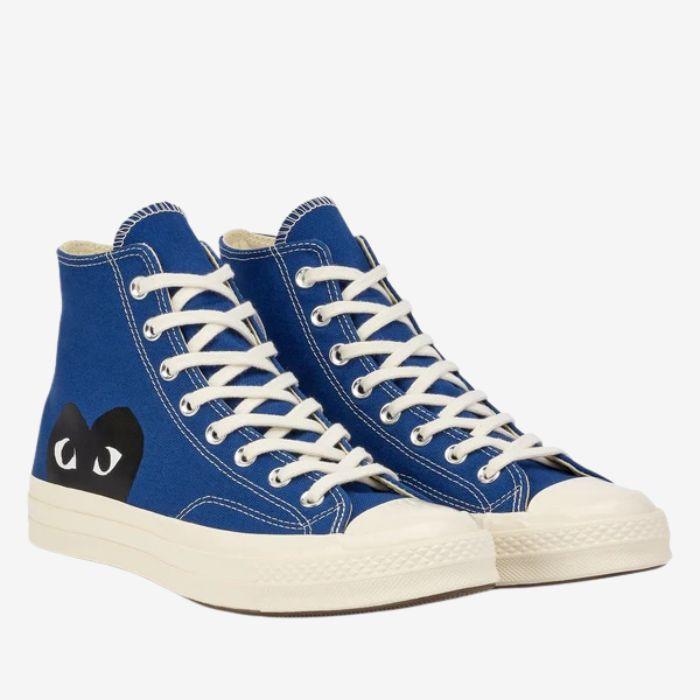Sneaker culture used to follow a formula—sports figure, signature line, maybe a limited drop. Then Comme des Garçons walked in, not so much asking for a seat at the table as flipping it over entirely. CDG didn’t adapt to sneaker culture. It warped it. Fashion-forward yet street-rooted, the brand broke unspoken rules and built new blueprints. Suddenly, sneakers didn’t need to be athletic. They needed to be conceptual. And nothing’s been the same since.
Breaking the Mould: Rei Kawakubo’s Design Ethos
Rei Kawakubo doesn’t do “normal.” Her design language speaks in riddles—collapsing silhouettes, raw hems, and intentional “errors.” That same philosophy bled into the sneaker space. With CDG sneakers, you’ll find misaligned panels, textural chaos, and silhouettes that challenge utility. commedesgarconusa.com showcases this avant-garde rebellion, a digital reflection of her unconventional vision. She wasn’t just designing kicks. She was questioning why sneakers had to look a certain way at all. The result? Footwear that exists outside the commercial algorithm.
The Power of Understatement: Minimalism as Protest
While the world clamoured for loud colourways and metallic finishes, CDG quietly dropped all-black Prestos and ghost-white Chucks. Minimalist? Yes. But not to blend in—rather, to rebel against trend cycles. Stripped of distractions, CDG sneakers offered clarity. It was a bold move: use absence as presence. It made the statement louder than any neon-accented competitor.
High Fashion Meets the Streets: Collabs that Redefined Cool
Before “luxury x sneaker” became every brand’s go-to, CDG had already cracked the code. The Converse PLAY line blurred the line between skate park and gallery opening. Nike collabs like the Air Max 180 and Foamposite One weren’t just flex pieces—they were wearable manifestos. CDG turned collaboration into conversation, pulling sneakers out of athletic contexts and into fashion’s higher orbit.
Gender Fluid Footwear: Ignoring the Binary
While others still slap pink on a shoe and call it “women’s exclusive,” CDG simply makes sneakers. Period. Unisex sizing, androgynous design, and zero reliance on gender norms. They craft silhouettes that speak to identity beyond biology. Their aesthetic lives somewhere between masculine and feminine, balancing softness and structure. It’s fashion that asks, “Why choose?”
Concept Over Hype: Storytelling That Outlives Trends
Most sneaker drops chase relevance. CDG chases meaning. Each release is stitched with a narrative—sometimes abstract, often personal. A distorted Dunk may echo themes of vulnerability. A deconstructed Air Force 1 might reflect ideas of fragmentation. While others ride the hype wave, CDG crafts chapters in a larger novel. These shoes are for thinkers as much as they are for wearers.
Creating Space for the Weird and the Wonderful
CDG’s impact isn’t limited to their own releases. Their presence opened doors for weirdness in the sneaker industry. Suddenly, it was okay to release a transparent shoe. Or a sneaker that looked like melted wax. Emerging designers, inspired by Rei’s audacity, now embrace imperfection, asymmetry, and conceptual design. CDG didn’t just influence sneaker culture—they infected it, gloriously.
Final Thoughts: Not Just Sneakers, But Statements
Comme des Garçons doesn’t design sneakers for athletes. They design for thinkers, for disruptors, for those who refuse the mainstream sneaker gospel. Their work redefined what sneakers could be—not tools of performance, but vessels of expression. In a world obsessed with speed and resale, CDG chose depth and meaning. They didn’t just change sneaker culture. They elevated it into an art form.
